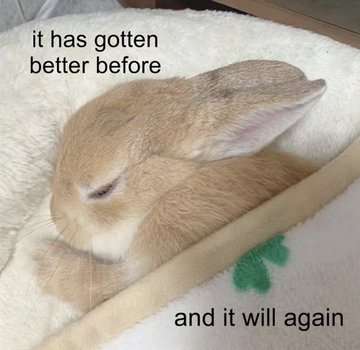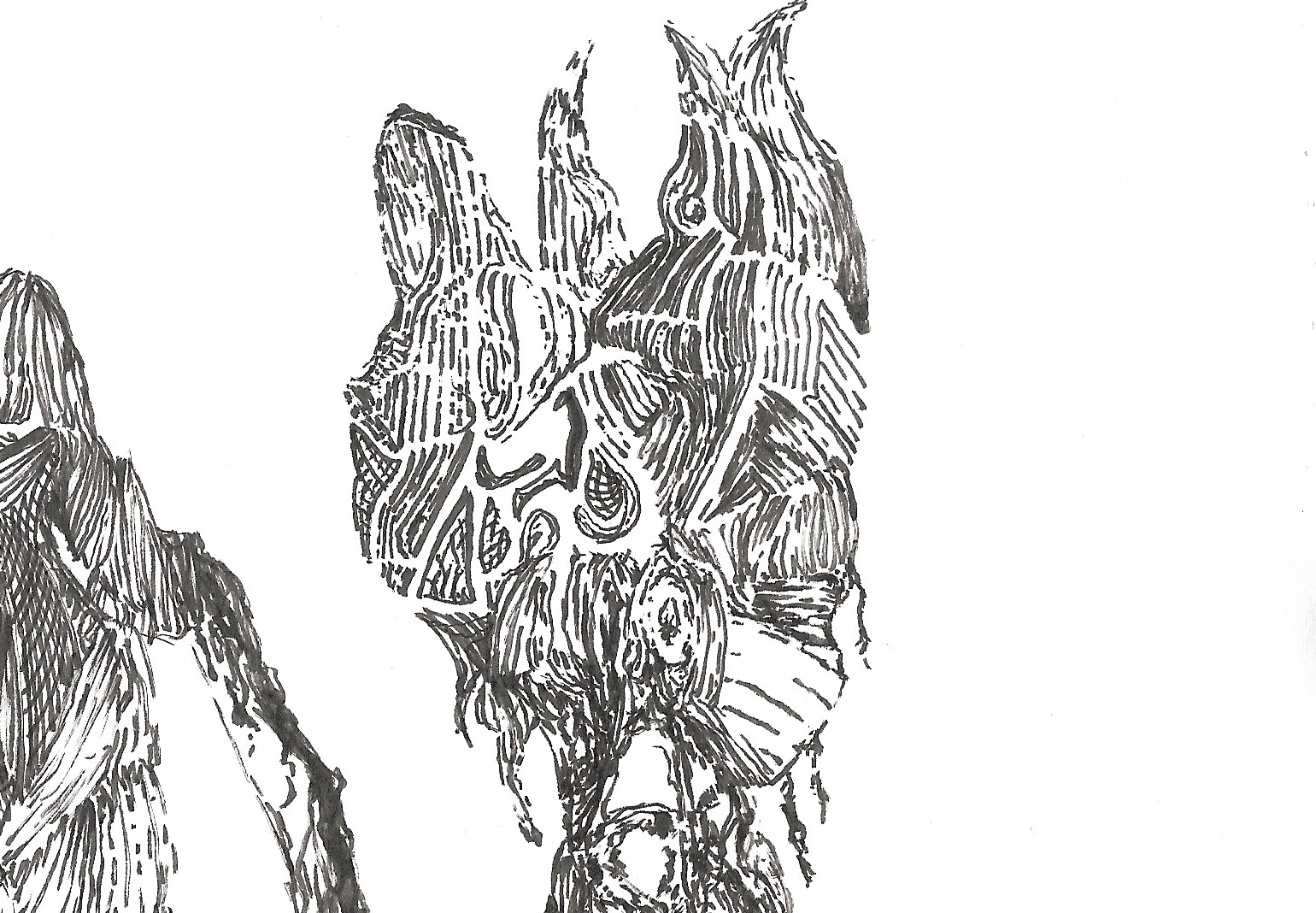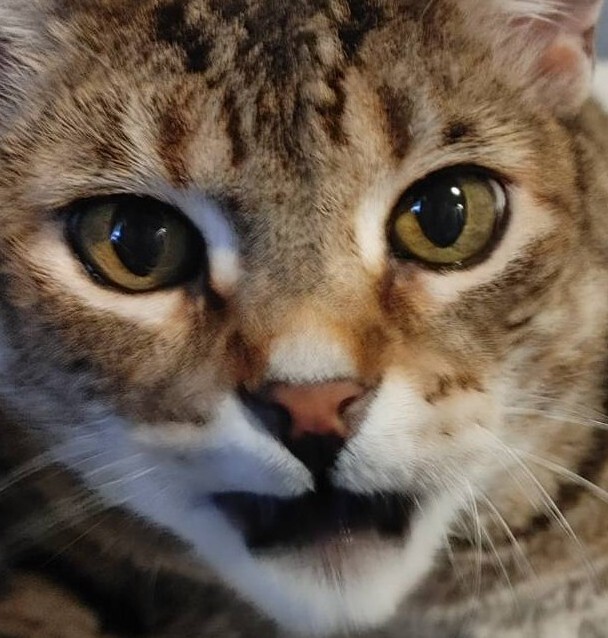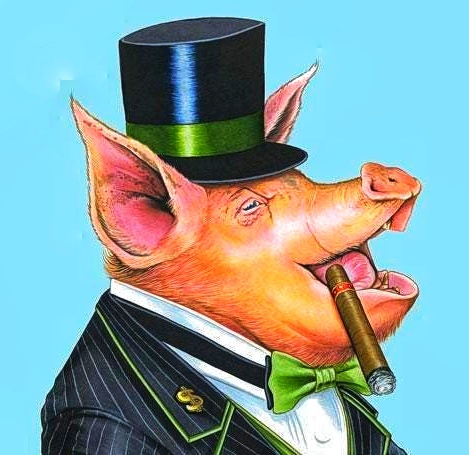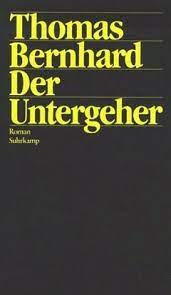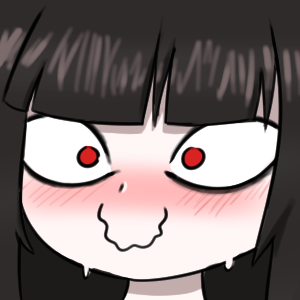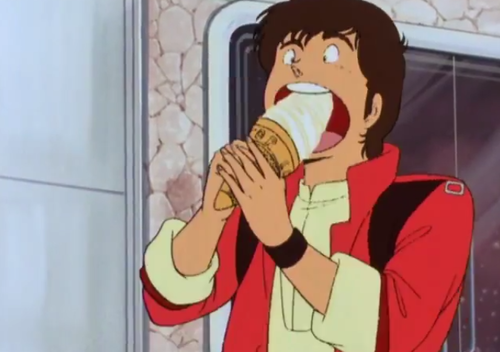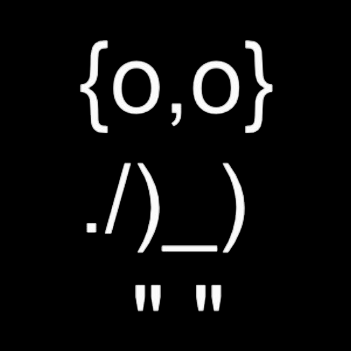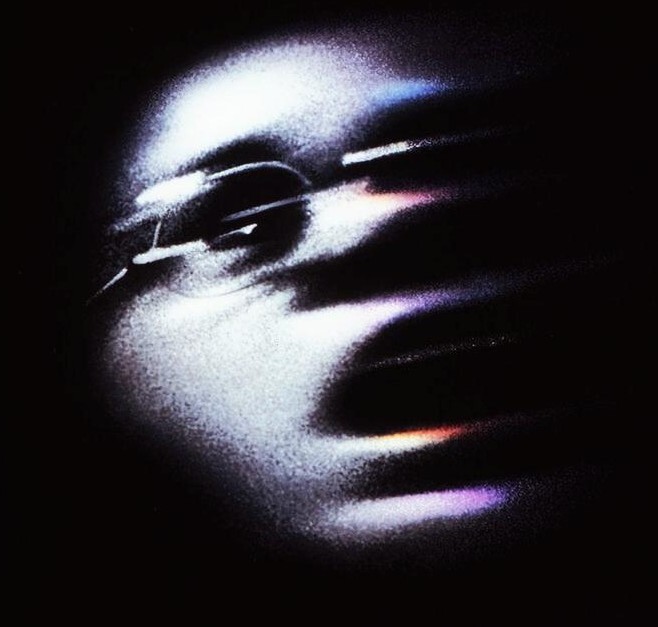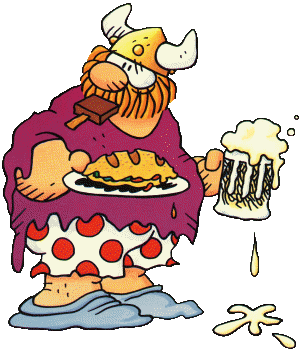it's a bummer that I'm not the reincarnate of Kurt Cobain but hey, on the bright side at least I'm not Jeffrey Dahmer either
you absolutely can and will live right next to paralllel selves.
one of these lives you're gonna reach enlightenment and realize 60% of the time your mom was yourself
This is fed posting. You're not going to get me to give clues about my birth date. Even if I am the reincarnation of Friedrich Engles
oh god I don't want to dox myself by giving away my actual birth date but I looked up what famous people died that day and it's not great
Don't worry, that's for the poor souls born 40 days after you to worry about. You gotta factor in the commute.
Can you imagine being the dude who finds out they're the reincarnation of Henry fucking Kissenger?
When Goku killed Kissenger, he wished that he would be reborn as a good person so they could do karate together. That's how Regnessik was born.
Serious question: how is reincarnation supposed to work given the massively increasing human population? Wouldn’t there be a shortage of people to reincarnate?
In Buddhism, there are many other realms of existence like the hell realms, realms of the gods, the pure lands, the animal realm which physically exists in the same one as humans but is a distinct experience, etc. Insects also count in this.
Although similarly in the physical human and animal realm, aliens in an infinitely far away galaxy would fall under the same rules. So you've got a lot of pools to pull from that are all impermanent, but not bound by human population numbers.
Edit: there's also two distinct schools of thought as to whether rebirth is instantaneous after you die or if there's a sort of lag that may be intentionally affected by those who are sufficiently enlightened. So there could be a period of people sort of waiting in line, though its not actually that simple.
I'm the reincarnation of a plankton that farted and died!
My own working interpretation, and note this is from what I've read and thought about, and I may have my blind spots, is that this specific question is likely another version of one of the unanswerable questions the Buddha warns against, being some variation of questions such as "what was I in the past?" or "who will I be in the future?" or, as may be more clear later, "what are the precise results of karma?".
These are unanswerable because they distract from the practice, and are sorta ill-posed. Though I do think there can be some benefit to revisiting these questions at higher and higher stages to further see how they may be ill posed.
For me, the idea that there must be a one to one matching of previous lives to future lives is still accepting a concept of identity between lives (and also identity within a life) and emphasizing identity over continuity - reincarnation instead of rebirth.
As there is no permanent residing self, there can be no permanent residing self that gets one-to-one placed in a new body at the time of death. There isn't a self, but the unborn, the Buddha-nature. We are this Buddha-nature, we are an instance of the universe's own awareness. And this Buddha-nature cannot be born, die, or even be reborn. My current, unenlightened, analogous concept for this is to think of it as "awareness", though any word couldn't actually describe it.
As bodies with organs to sense and think, there is a long continuous stream of ever changing sense impressions and mental concepts. This is the mind-stream. Here, from context with the world, from identification with thoughts, from the stories and self-talk we constantly engage in this illusion of self gets constructed. We don't realize ourselves as the unborn, as the Buddha-nature we all are, we conceptualize ourselves as something distinct, distant, and separate from it. And we falsely identify ourselves with an ever changing and ephemeral phenomenal known as self.
Why did I bother with this long tangent, because some confusions regarding rebirth can derive from a subtle acceptance of self as having permanent substance, a self-causing substance, or what can be called svabhava. If so, the one tends to imagine reincarnation instead of rebirth. And there is a difference between the two.
While we're unenlightened our actions produce effects, the chain of cause and effect continues, and this shapes the context and form of new life. This is karma. As long as there are unenlightened beings, the Buddha-nature of those beings will be occluded by their self-concept. Their self, and their mindstream, will be a result of previous actions. Many actions. In Buddhism, the idea of codependent origination is central. There is no one cause to phenomenon, the rebirth of self included. There are a host of causes that condition future self- formations on present and future beings.
Any continuity you can find, and you are bound to find a continuity due to codependent origination, between iterations of self (within and between beings) can be seen as rebirth. Rebirth is the continuous reconstitution of the false idea of self in ourselves and in others, tied together by karma. There isn't identity between self-formations, but there is continuity. And perhaps it's possible that any angle of viewing the continuity is equally valid.
Now I am taking this from my readings in Tiantai Buddhism. Others may be more strict on saying there is exactly one karmic line from one life to the next to the next. So I'm possibly being heterodox (Tiantai can be a little heterodox at times).
But I still hold that the confusion about "does one life segue into exactly one next life, how does that work if the previous number of lives doesn't equal the next" starts to meaningless and like the wrong phrasing of the question as my journey continues.
But also, as others said. There are no shortage of lives, realms, and beings that are in samsara. The Buddha-dharma is everywhere and in everything.
I actually don't think the question of rebirth mechanics is unanswerable. I alluded to this in my response, but below is what I've previously written on the topic. It's a little old, so probably needs some polishing. This was in the context of the question of abortion and how it fits into Buddhist ethics.
Warning, long:
Establishing what we mean when we say "consciousness is present"
spoiler
Also referred to as The Greater Craving-Destruction Discourse, the Mahā Taṇhāsaṅkhaya Sutta primarily describes the relationship between consciousness and rebirth. Elaborating on the latter, it explains rebirth as being made up of processes in a causal chain that can be isolated and described. Included in this is the point at which an individual “life”, understood in this context as consciousness residing in a prenatal human form, actually begins. To clarify, the consciousness that resides in the human body is explicitly not described as a self-arising entity entirely separate from any other part of the causal chain. It is not a soul-like object at some point being transplanted into the human body, at which point it is now unskillful to terminate a pregnancy. This is the view of Sāti, the ignorant fisherman’s son, who is corrected by the Buddha in the sutta. Instead, it is described like all things, as a result of dependent arising whereby “consciousness” in this context refers to the sixth sense-media of “mind”
The “mind” referred to here only resembles our common understanding of consciousness once it has come into contact with a sense-object, completing the trio of intellect (the ability to think), ideas (the thought process), and the sense-object to form the complete consciousness of the mind, then called contact. But the mind consciousness alone is not enough to constitute a person without the accompanying physical sense-media of the eyes/visible objects, ears/sound, nose/smell, tongue/taste, and body/touch which the mind consciousness interprets in a wider context. However, the mind consciousness comes last in the progression of sense conditions. This means that the earlier stage of eye/visible object might allow us to see our surroundings, the mind consciousness allows us to determine how those objects interplay in those surroundings. From this we can glean how the process of consciousness comes to be in a systematic way.
We start with the 5th link of dependent origination, saḷāyatana. This is a specific sense media, the object of that sense media, and the coming together of the two to make phassa, or contact, the 6th link of dependent origination that is all of the sense-media and their objects combined. Contact is the “cognitive event” that is triggered by the media, the object, and the coming together. The arising of contact then leads to the 7th link, vedanā or “feeling” which is then cognized by the conglomeration of sense-media. This “feeling” is “the affective mode in which the object is experienced” prior to any notion of pleasure or displeasure. This allows us to understand “consciousness” in Buddhist terms, as a thinking and feeling being in prenatal form conditioned by this process. This is therefore the earliest point at which it may be reasonably argued that is unskillful to terminate a pregnancy using our contemporary understanding, with the exception of arguments relying solely on the existence of a heartbeat. In this case, material form is covered by the first of the five skandhas, being a necessary prerequisite for the development of the consciousness we just discussed. However, to determine if this argument has any weight in Buddhist contexts, we must now find out just when the consciousness we have discussed actually resides within the human fetus. We can do this by first returning to the suttas discussed earlier, which elaborate on the necessary conditions for a conscious being to be present in the prenatal form.
We return again to the Mahā Taṇhāsaṅkhaya Sutta in the section titled “The Birth & Growth of a Being” In this section, the conglomeration of all of requisite the sense-media and other twelve links of dependent origination are part of what makes up the gandhabba, in this context likely meaning the viññāṇa or the rebirth consciousness that makes up the 3rd aggregate and that is elsewhere described as “animation” or “regenerative force” that gives life to a body. According to this sutta, three things are necessary for rebirth in the human form to occur. These are “when there is a union of the mother & father, the mother is in her season, and a gandhabba is present, then with this union of three things the descent of the embryo occurs.” This passage seems to imply that at least the process of life begins at conception or shortly thereafter when this union of three takes place. This is similar to Tibetan interpretations, whereby a being in the bardo or transitory state between lives witnesses their parents having sex and gravitates towards that specific couple based on their karma, finally entering the embryo. Thus, while consciousness and rebirth as described in the Pāli suttas may be enough to designate abortion as unskillful shortly after copulation, it is known that not all Buddhists adhere strictly to the Pāli canon. To be assured of this stance, we must examine the works of two authors with fundamentally different views on the subject of consciousness and rebirth, representing later Theravādin and Mahāyāna views.
Theravādin example of instantaneous rebirth
spoiler
Starting with the Theravādin view, we can look to the Visuddhimagga or the The Path of Purification by the 5th century Indian commentator Buddhaghosa. Although it is a compilation of a vast array of topics, of particular interest is section three, which includes systematic descriptions of the five aggregates, the sense-media, and dependent origination. Under the heading “The Truth of Suffering”, birth is described as a form of suffering. Apparently quoting from the Vinaya Piṭaka, Buddhaghosa writes “His birth is due to the first consciousness arisen, the first cognition manifested, in the mother’s womb” and refers to this process as the “rebirth-linking” numerous times in the text. Rebirth-linking is the arising of the necessary conditions for consciousness as defined above to carry over from the moment of death in one life to birth in the next. This rebirth-linking is thought to explicitly deny the assertions made above regarding the existence of a being in an intermediary state waiting to be reborn, forming the basis for disagreement between Theravādin and Mahāyāna commentators. Buddhaghosa instead notes in his commentary on the Majjhima Nikaya that the gandhabba is simply another way of describing this process.
In Buddhaghosa’s model, there is no transition period or being that one manifests as, which implies that the process of rebirth is instantaneous after death in a previous life. This is further supported by two lines in the Milindapañha, which explains that the process of rebirth does not require transmigration, and that “…if someone passes away and is reborn in the Brahma world, and if another passes away and is reborn in Kashmir, they happen in the same time.” The logistics of this are beyond the scope of this paper. However, the conclusion suggests that because there is an unbroken continuity of the life-stream, it is thus never acceptable to have an abortion, for this process begins at the moment of conception. Buddhaghosa says as much in his further discussion of the idea of birth as suffering, where he writes “When the mother has an abortion, the pain that arises in him through the cutting and rending in the place where the pain arises that is not fit to be seen even by friends and intimates and companions—this is the suffering rooted in abortion.” As to the extent that Buddhaghosa represents the general Theravādin community’s view on this topic, both then and now, that much is unclear. However, given Buddhaghosa’s reputation within the wider Buddhist tradition, it would be reasonable to assume there were others with the same opinion regarding instantaneous rebirth and the troubles then caused by abortion. For others unconvinced by this position, there remains Vasubandhu, referenced here to represent the opposing Mahāyāna view.
Mahāyāna and delayed rebirth
spoiler
Vasubandhu is a well-known Gandharan monk and philosopher from 4th century, best known for his commentary on Adhidhamma texts and helping to found the Buddhist Yogācāra school. In his commentary on one particular text, the Abhidharmakośakārikā, death is described as “the exhaustion of life without the exhaustion of merit” In this context, there are four modes of existence that can be ended, resulting in this type of death. One of these is “existences destroyed by others: beings in the womb and in eggs”, and Vasubandhu also refers to “beings in the intermediate state” and a “gardharva” throughout his commentary. In specific relation to the arising of consciousness, or the creation of a human being, Vasubandhu has been interpreted as supporting the idea of life beginning at conception through his explanation of the relationship between the moment of conception and the arising of the five skandhas, which happen simultaneously. Though they disagree with the exact process, it is quickly apparent then that abortion is not justifiable in the system described by Vasubandhu, just as it is not justifiable to Buddhaghosa. Since it has thus been thoroughly established that there is no Buddhist system in which abortion is not seen as equal to the killing of a human being, there now comes the question of how Buddhists have justified pro-choice stances on the topic of abortion, despite the stance of Buddhist scriptures and philosophers.
Edit: Tl;dr there's a lot of suttas and texts that talk about the process of transmigration between lives. I hit char limit but I don't disagree with the rest.
Thanks for the response. There's a lot of info (as I like posts to have ;) ) so I'll chew on it a bit. And I agree with you as you are right in that there are examples in sutras where people have insights into their past lives, the Buddha talks about his past lives as well, so the question can't be viewed as unanswerable in the absolute sense.
I suppose I meant that it may not be skillful means at an earlier stage of engagement with Buddhism to linger on such questions - though obviously I'm taking a lot of energy talking about my own views on it so I'm either not being skillful myself or I just do find it interesting to think about. The Sabbsava sutras lists similar questions as unskillful questions to ask. But, as I mentioned and as I'm doing now, I think it can be fruitful to go back to these types of questions and answer them at higher and higher stages each time.
Perhaps it can be unskillful if one approaches these questions with a false conception of self, as viewed as some self-propelling svabhava-having entity moving from one body to the next?
But I haven't reached enlightenment yet. So I'm stuck with words.
Now I have some more works that can inform my practice, thanks!
Totally agree with you as far as skillfulness, it's something you can endlessly ponder instead of doing something better with your time. Just wanted to point out that many people have pondered it, so I think I'm with you in that it's fine so long as you recognize that you are not a permanent soul being reborn, as you were talking about in your post.
I'd imagine new souls can be born while older ones continue to be recycled.
In Buddhism, you can also break the cycle of reincarnation which means some of the old souls are gonna get cycled out, too.
You know how humans and livestock now make up like 80% of all mammal biomass and all other animal families are rapidly declining? That's how

We are taking people who were meant to have a few more cycles jumping between lives of exotic weasels and dung beetles and instead they're here inventing machine learning 'enchanced' 'AI powered fridges'
You can get reborn as other animals than human though and the Buddhists (at least the Tibetan ones AFAIK, my memory about this is kind of hazy) believe you can be reborn in other planes of existence like one of several heavens or hot or cold hellsb which ought to create enough wiggle room for a growing human population to be reincarnated.
you are also a cool person, so what's the difference?
i'm the reincarnation of bjork and she's still alive in iceland and #grandmothering
